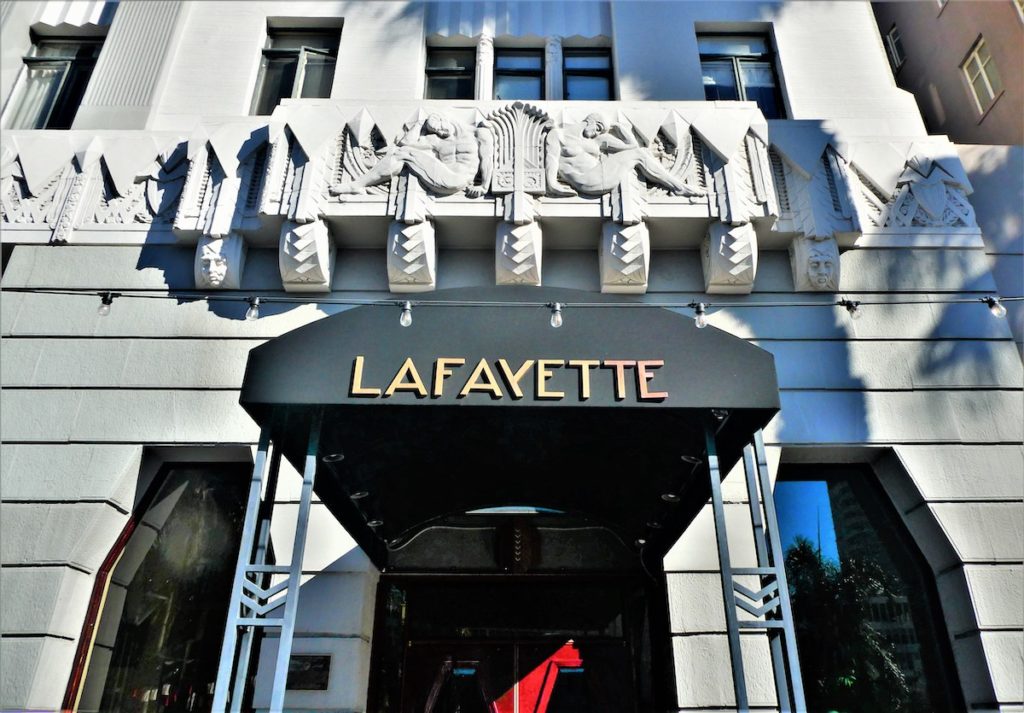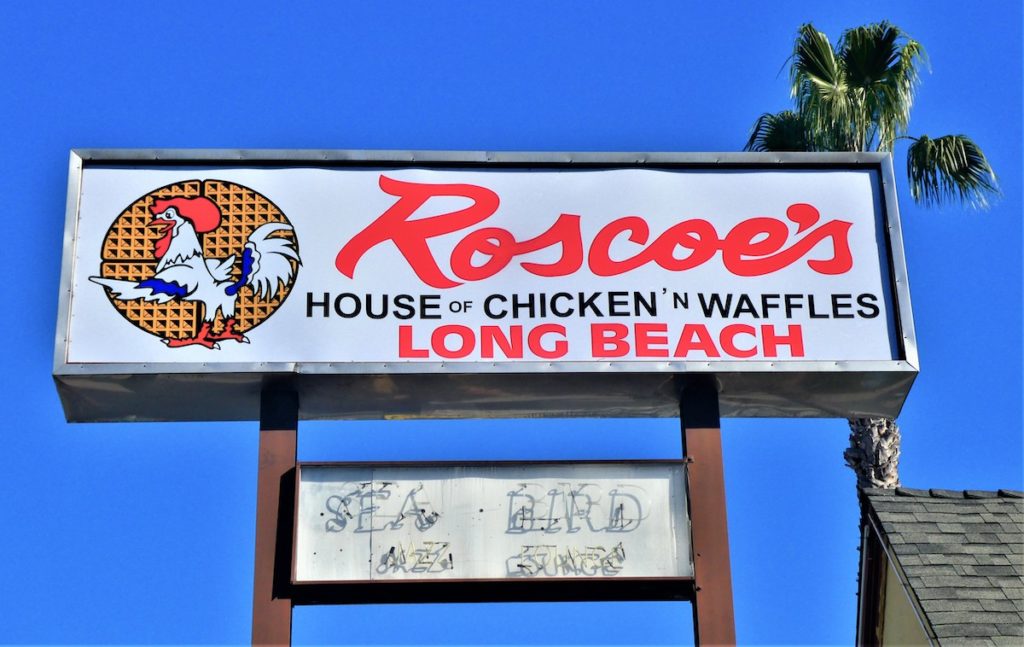
The Lafayette
Long Beach is well known for its diversity and inclusion — but it wasn’t always this way. During this digitally guided Walking Tour of Downtown, created in honor of Black History Month, you will visit places that still resonate with the injustices, struggles, and triumphs for Black people that have taken place here and throughout the United States over the last several decades and beyond.
Start your tour at the northwest corner of Pine Avenue and Ocean Boulevard. Look with your mind’s eye down the street to the west and imagine a place that used to stand next to the beach between Chestnut and Magnolia Avenues: The Hotel Virginia, one of the only places in Downtown during the 1920s where Black folks were allowed to go — but only if they were employed there.
Now look directly across the street and down to the waterfront, where The Pike amusement park used to be, think ahead ten years and hear the sophisticated sounds of Nat King Cole, who got stranded in Long Beach in the mid-’30s and ended up with a steady gig at The Pike before moving to L.A. and launching his legendary career.
Move forward ten more years and picture Ocean Boulevard teeming with sailors in port or stationed at a nearby naval base designed by a Black architect and his partners. The Black sailors don’t feel comfortable at the Ocean Boulevard USO, though; Many of them prefer to go to another, more welcoming USO in Central Long Beach.
Move ahead to the late ’40s and you may hear Billie Holiday’s mournful voice drifting over from the Terrace Theater, where the Municipal Auditorium once stood. Holiday, an artist who didn’t shy away from addressing racial injustice, sang there in 1949.
Fast-forward to the mid ’50s and catch the sounds of jazz drummer Chico Hamilton and his band, who had a months-long residency at Strollers, a small club at nearby 27 Locust Avenue, not far from where you’re standing. They recorded a live album at the club in 1955.
Now proceed north on Pine to your first real-time destination. Stop at the corner of Pine and Broadway and gaze at the gorgeous turquoise and gold ornamentation on the Rowan-Bradley Building, built in 1930. It is one of the most outstanding examples of “Zig Zag” Art Deco in southern California.

In the ’80s the building became known for its audaciously-named second floor nightclub, Birdland West, owned by another top-notch jazz drummer, Al Williams. Williams fronted his own band there, and played host to jazz greats such as saxophonist Eddie Harris, keyboardist Joe Sample, and vocalist Carmen McRae, who recorded a live album in the club, which had a reputation for excellent acoustics.
The building is now home to a group of eateries and drinkeries; Pop into Shannon’s on Pine for a quick refresher on the ground level before continuing your tour.
Head up the block to just before Fourth Street and look across the street at a striking mid-century modern building with a beautiful mosaic on its facade; This is the old Bank of America building, now the Antioch Church, designed in the early ’60s by prolific Black architect Paul Revere Williams. In addition to this building, Williams designed hundreds of other structures, including the Space Age-looking Theme Building at Los Angeles International Airport, and homes for top-level stars such as Frank Sinatra and Lucille Ball.

It was Williams who partnered with two other architects in the design of the Roosevelt Naval Base, just west of Downtown, which opened during World War II and served the nation for over 50 years.
Turn right on Fourth Street, stay on the south side, cross Long Beach Boulevard, and, before grabbing a coffee or a bite at the Berlin Bistro, take some time to visit the adjoining record shop, Fingerprints Music, so you can search for Carmen McRae’s album “Fine and Mellow: Live at Birdland West” and Chico Hamilton’s “Live at the Strollers.”
Continue east on Fourth Street to Linden Avenue, where you’ll turn right. Go all the way down to Broadway, where you’ll see another magnificent Art Deco building, The Lafayette, on the southeast corner. It was here in 1966 that Dorothy Height, a key figure in the Modern Civil Rights Movement, was the keynote speaker at a meeting of the Long Beach Chapter of the National Council of Negro Women.
Height, who began her activism in anti-lynching campaigns during the ’20s while attending New York University, was sitting just feet away from Martin Luther King, Jr. when he made his “I Have A Dream” speech during the March on Washington in 1963.
Go east to 730 Broadway, where you’ll wind up your brief-but-evocative tour at Roscoe’s Chicken and Waffles. Linger over some of Downtown’s best soul food, and, if you’re there on a Friday, Saturday, or Sunday, you can move out of the dining room and into Roscoe’s Jazz Lounge to hear some superb jazz and blues. It is the perfect place to join a crowd that will most likely represent an accurate picture of what Downtown Long Beach aspires to be today: Diverse, welcoming, and mutually uplifting.

DLBA continues to work with community partners to further unlock the deep connections that our buildings and neighborhoods represent to DTLB. Though we don’t always think about it as we go through our daily lives, older buildings hold endless stories about our community and provide a deeper understanding of our sense of place and connection to the past.
If you are interested in learning more about important places and people in the history of Black/African Americans in Long Beach, follow the ongoing work of the African American Cultural Center of Long Beach at aacclb.org.
Special Thanks to Claudine Burnett for her knowledge and perspective. Claudine, a librarian, historian, and author, has written several books about Long Beach, including her most recent offering, “African Americans in Long Beach and Southern California.” To learn more about Claudine and her work, click here.
